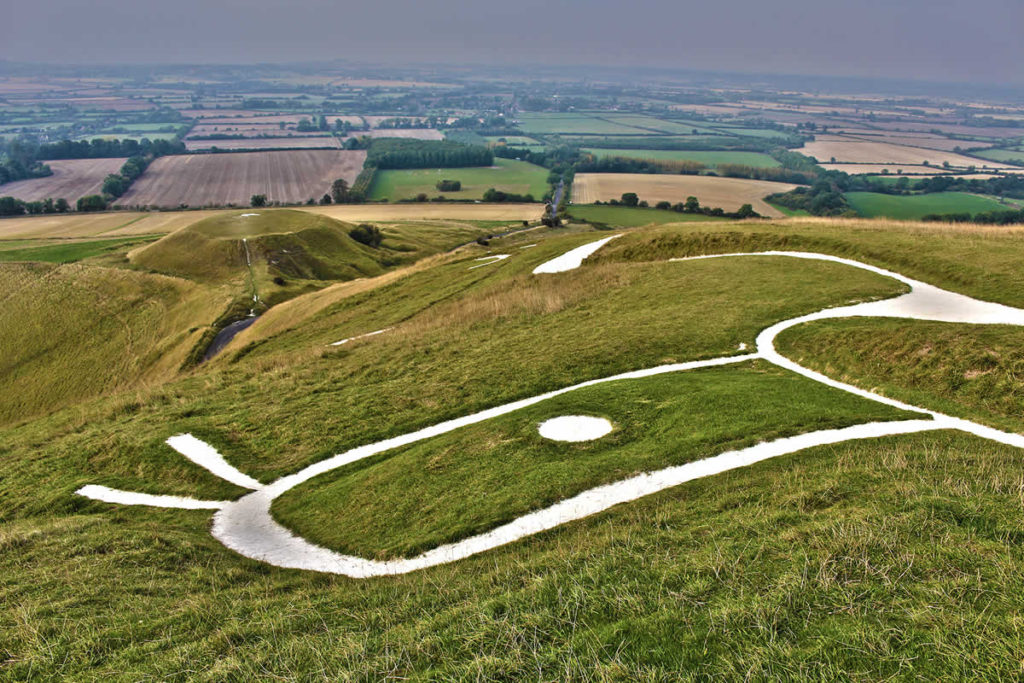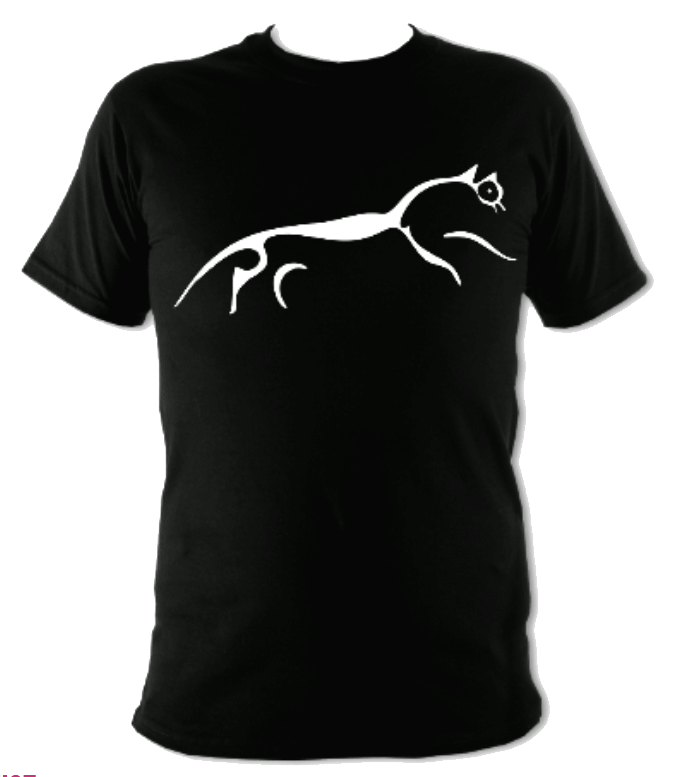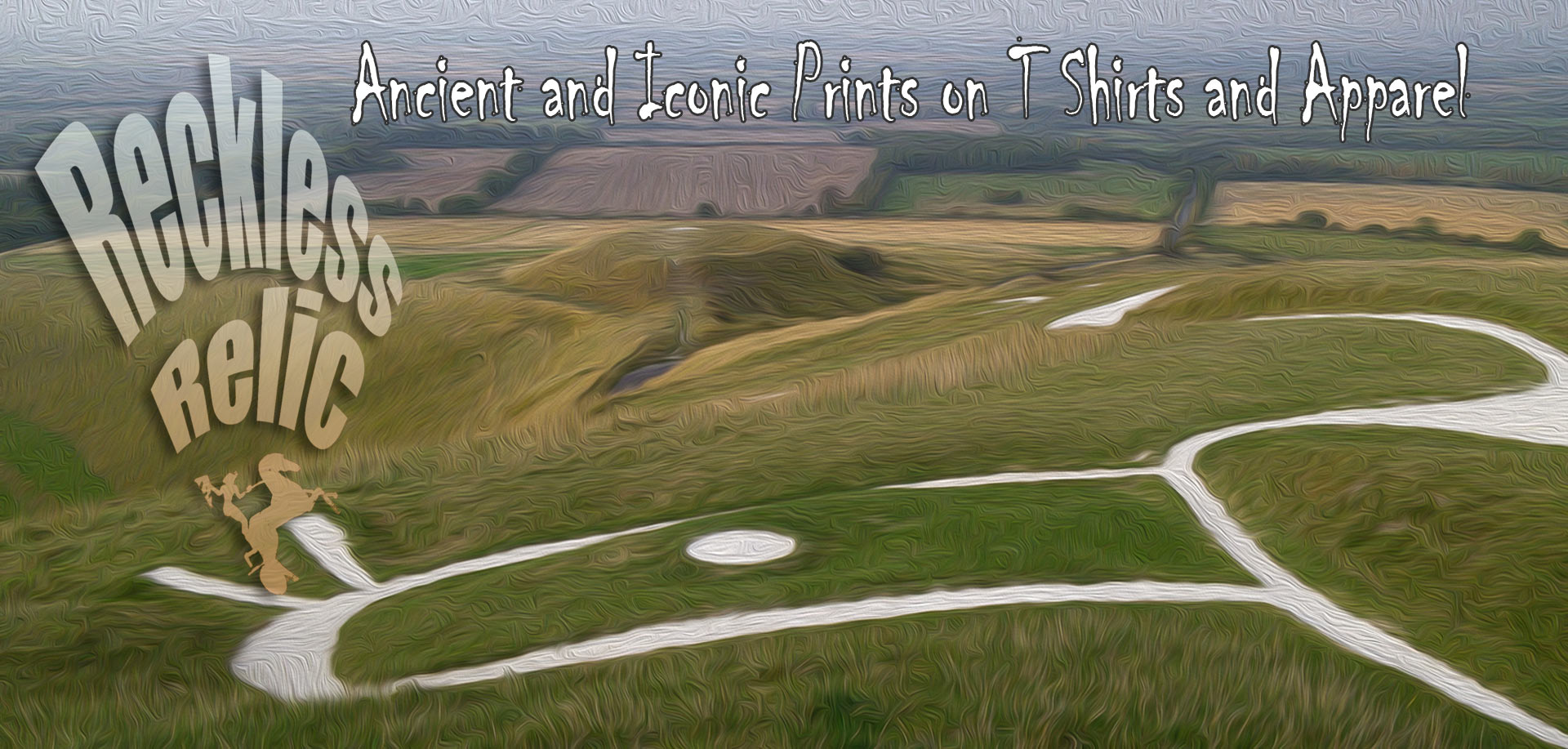The White Horse of Uffington is a chalk drawing, which sits on a steep escarpment on the Berkshire Downs, within the Vale of the White Horse in Oxfordshire. A Late Bronze Age hillfort sits above it (dating from the 7th century BC) and below is the Ridgeway, a long distant track from Neolithic times. Not far away is Wayland Smithy, a Neolithic burial mound.
The earliest reference to the Horse dates from 1070AD when it was mentioned in a charter belonging to nearby Abingdon Abbey.
Celtic coins from the first century BC depict horses very much in this style, but recent dating using modern techniques, may indicate that the figure is older than first thought. In 1995 Optically Stimulated Luminescence (OSL) testing was carried out on the soil which dated the horse to between 1400 and 600 BC – this puts the White Horse back to the Late Bronze Age or Early Iron Age, and suggests a relationship with the people who lived in the Hill Fort above.
The chalk figure is 110 meters long and 40 meters high and is best seen from the air. Why is a mystery, but there are suggestions that it is a Tribal emblem or a carving created to perform religious rituals, in which case perhaps it was made to be seen by sky deities. If tied to ancient religions, the first Goddess that comes to mind is Epona, a Celtic Mother Goddess, who protected horses and symbolized fertility. She was adopted by the Roman Cavalry and was the only Celtic Goddess recognized by the Romans. This is special enough until you realize that the latest dating for the White Horse at Uffington predates the Celts by six centuries!

However, it is known that horses were of great importance during the Bronze and Iron Ages, being depicted on jewellery and coins. Thus the horse at Uffington may represent the White Horse ridden by the goddess Rhiannon – a native British horse goddess, later described in Welsh mythology as Queen of the Otherwold. And, as with many survivors from the ancient world, there are other theories – even that the horse began life as a dragon!
The White Horse is an emblem of ancient landscapes, imbued with mystery and beauty. It gallops into our times from a world of mysterious rituals, where ancient springs and groves once created magical tales, and a dragon dwelt in the hill. The White Horse symbolizes journeys, made centuries ago along the Ridgeway, where a man could look up and know his way, to the present day when the journey is to the hill itself, so one can sit above the horses eye and survey the unique landscape and imagine the ritual processions from Dragon Hill around the Horses Manger.
The antiquity of this chalk figure and its purpose may never be fully understood, but this piece of ancient art owes its very survival to the local people who came together every Midsummer and ‘scoured the chalk’. Thus, in today’s world, it can also claim to symbolize co-operation and the value of community.
Some say that it is not a horse but a dragon!
It can only be seen properly from the air.
What a cool image from ancient Britain!
Like to wear this image on your T Shirt?

Uffington White Horse
The White Horse of Uffington
A Truly Ancient Relic, the majestic White Horse is an unforgettable image surviving from Britain’s deep past.
Durable double cotton stitched t-shirt
